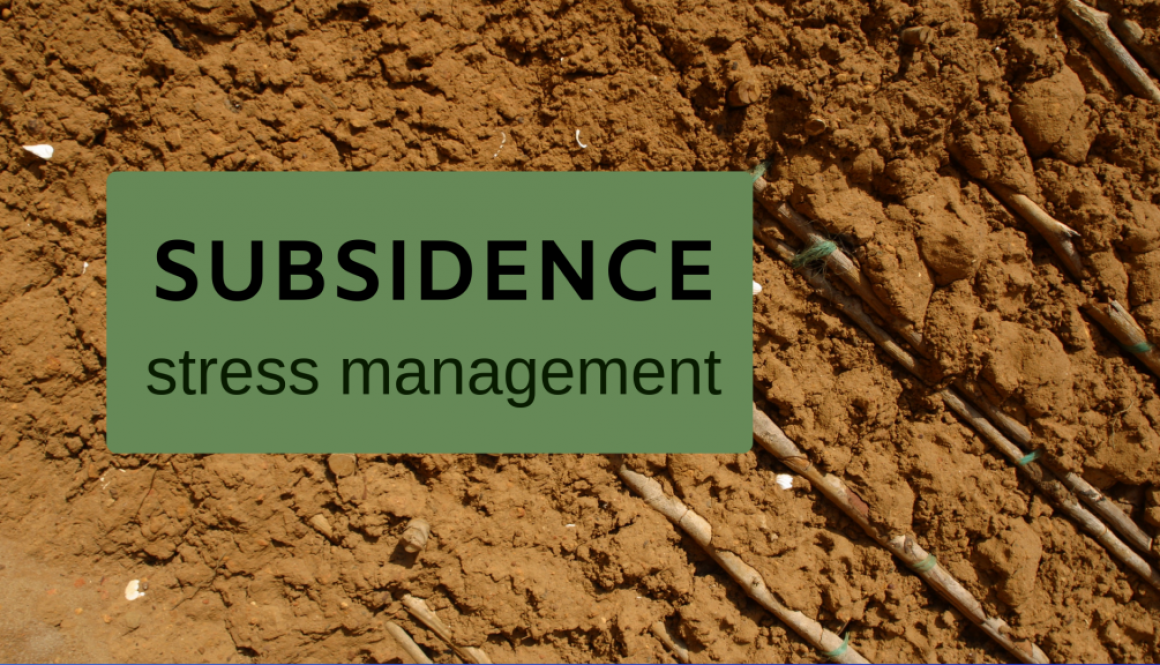SUBSIDENCE: THAT SINKING FEELING
Subsidence affects about 40,000 homes a year in the South East. Much of it is down to good old London clay. This type of soil expands and shrinks depending on how much moisture it contains. When movements in the earth cause your foundations to sink, you may have subsidence issues that affect the structure of your property.
WHAT IS SUBSIDENCE?
Subsidence occurs when the ground beneath a building sinks low enough to pull some of the foundations further down. The structure of the building will then be under considerable strain, more so where the sinking occurs.
Most homes in London are built on a layer of clay that can be over 100 metres thick. The volume of shrink-swell of this soil type is easily affected by changes in weather leading to movement under our housing stock. Victorian and Edwardian properties are particularly susceptible to subsidence as they have shallower foundations than more modern buildings. In extreme cases, leaking drains can wash away the soil around more shallow foundations.
Property owners in London also need to be aware that tree roots can contribute towards subsidence. Tree roots that grow too close to foundations are likely to remove water from the surrounding soil and can accelerate the drying and shrinking of clay.
SPOT SIGNS OF SUBSIDENCE
Cracks in your walls could be a warning sign that subsidence is affecting your property. Although most cracks that Laytoe’s structural engineers inspect are benign, we advise our clients keep an eye on them and check for changes in size over time.
While most cracks are indeed harmless, seek guidance from a structural engineer if you observe the following:
- The cracks in your walls are wider than 3mm
- They start off wider at one end and become narrower towards the other
- They travel diagonally across your wall
- They appear near windows or doors
- They are visible from both the inside and outside of your property.
WHAT TO DO IF YOU THINK YOUR HOUSE HAS BEEN AFFECTED BY SUBSIDENCE
Act early! Subsidence can take a couple of years to fix and acting early can limit the amount of damage caused. You will need a structural engineer to complete a report to confirm if subsidence is occurring and what is causing it. This may involve monitoring the damage over the course of a year.
If subsidence is confirmed there are a number of possible solutions depending on the cause. If tree roots are the issue, the obvious remedy is to remove the tree. However, this isn’t always an option as extracting deep, extensive roots can create more structural risks such as heave. You might consider pruning the tree so that it removes less water from the soil. While this won’t eliminate the problem, it may alleviate some of the stress on your property’s foundations.
If there has been significant movement in the foundations, underpinning may be necessary. Underpinning is the process of strengthening and stabilising the foundations. This is a lengthy, costly and disruptive exercise. Thankfully, fewer than 10% of subsidence cases result in underpinning.
CAN SUBSIDENCE BE PREVENTED?
Whilst it’s not possible to prevent subsidence entirely, you can minimise the risks. When landscaping, plan for trees to be planted a safe distance from your property. Prune existing trees and other foliage to regulate the amount of water they remove from the soil. Finally, make sure that drains, guttering and pipework are well maintained to avoid leaks.

